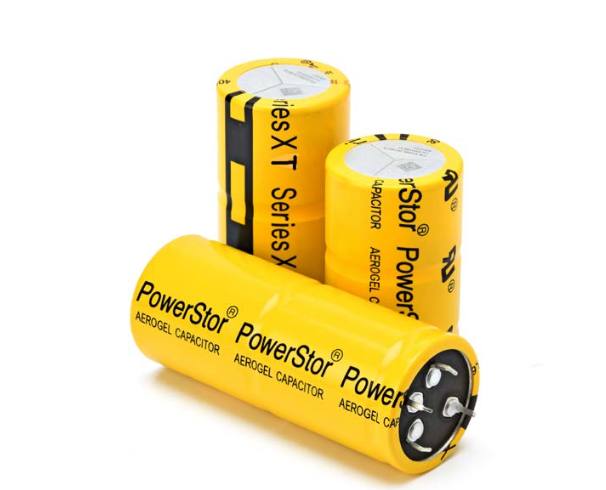Eaton
AetherCap | 555 F Eaton XT3585
AetherCap | 555 F Eaton XT3585
Precision-Engineered Power for Robotics, Aerospace, and Defense
Capacitor Bank
Built to Perform
Assembled in the USA using UL-recognized Eaton XT supercapacitor cells
Proprietary assembly process for thermal consistency and ultra-low ESR reliability
Voltage-matched and thermally managed for peak discharge performance
Certified for safe transport under UN3499 supercapacitor regulations
Backed by a Lifetime Warranty & USA-based customer support
Core Specifications
Configurable Nominal Voltage: 3 V to 30 V (1S–10S)
Configurable Capacitance: Based on cell (275 F / 370 F / 555 F) and series-parallel layout
Surge Voltage: 3.3 V per cell
Max Energy: Up to 69.4 Wh (e.g. 555 F × 10P × 1S)
Max Peak Current: Up to 3,410 A (depending on cell and layout)
Cell Chemistry: Electrochemical Double Layer Capacitor (EDLC)
Operating Temperature Range: –40 °C to +65 °C (up to +85 °C with derating)
Modular Configurations
Series (Voltage): 1S to 10S (3.0 V to 30.0 V max)
Parallel (Capacitance): 1P to 10P (scalable stored energy and peak power)
Available Cell Options:
XT3550-3R0287-R | 275 F | 4.5 mΩ ESR
more coming soon!
Mechanical Details
Custom housing dimensions based on configuration
Mounting: Snap-in, PCB, or busbar terminal block
Weight: Scales with cell count (e.g., 108 g × number of cells)
Jacketing: Standard shrink wrap or ruggedized enclosure available
Available Upgrades
Modular enhancements available upon request:
Sensors: NTC Thermistors or Digital Monitoring
Hard Case: Rugged aluminum-rubber composite
Custom Busbars / Mounting Brackets / Wire Harnesses
Pre-installed balancing circuitry for voltage equalization
Integration Notes
Designed for rapid deployment in robotics, aerospace, and defense-grade platforms. Ensure proper cooling in high-power applications. Voltage derating applies above 65 °C (2.6 V per cell at +85 °C). Contact us for airflow modeling or thermal support.
Engineering Support
We offer:
Custom layout support for specific voltage and energy needs
System integration for hybrid battery-capacitor architectures
CAD drawings and thermal modeling for rapid deployment



